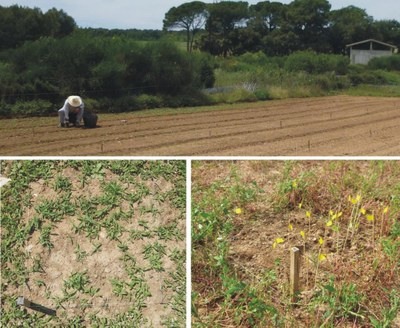Weed Ecology. Population ecology, interactions with other species, studies on plant communities linked to crops
Update on June 2014
Throughout the world there are great extensions of crops in which chemical weed control must be reduced; alternative or complementary methods for weed management are needed, in order to generate less pollution and consume less energy.
|
Currently we were working, as intensively as we can, in the study of the interaction between Digitaria sanguinalis and Ustilago syntherismae (weed-smut pathosystem) with the prospect of diminishing population density of this present day's weed species. The study of this plant-pathogen interaction involves various approaches:
. field research phenology demography within population variation |
 |
|---|

. laboratory research
seeds and spores germination abilities
 |  |
|---|
|
fungal reproductive system
infective processes |
 |
|
|---|---|---|
|
. greenhouse work
|
 |
Today’s weeds could be the cultivated plants of tomorrow. The ruderal plants of the Paleolithic were the cultivated plants of the Neolithic. In fact, the concept of the weed is completely anthropogenic and volatile; it depends on the interests of each time and place. Knowledge of these fast-growing, fast-reproducing plants is a matter of global interest.
|
Furthermore, the weed research team has worked on various projects ranging from approaches of a botanical nature to applied crop technologies:
|
 |
|
|---|---|---|
|
· use of mulch in mandarin orchards |
 |
|
|
|
 |
|
|
|
|
|
|
|
 |
Our research on weeds began in the 90's of the past century.
Research team:
Antoni Maria Claret Verdú González. Biologist (Botany) 1976. PhD in Biology (Ecology) 1984.
Maite Mas Serra. Biologist (Botany) 1988. PhD in Biology (Genetics) 1997.

Share: